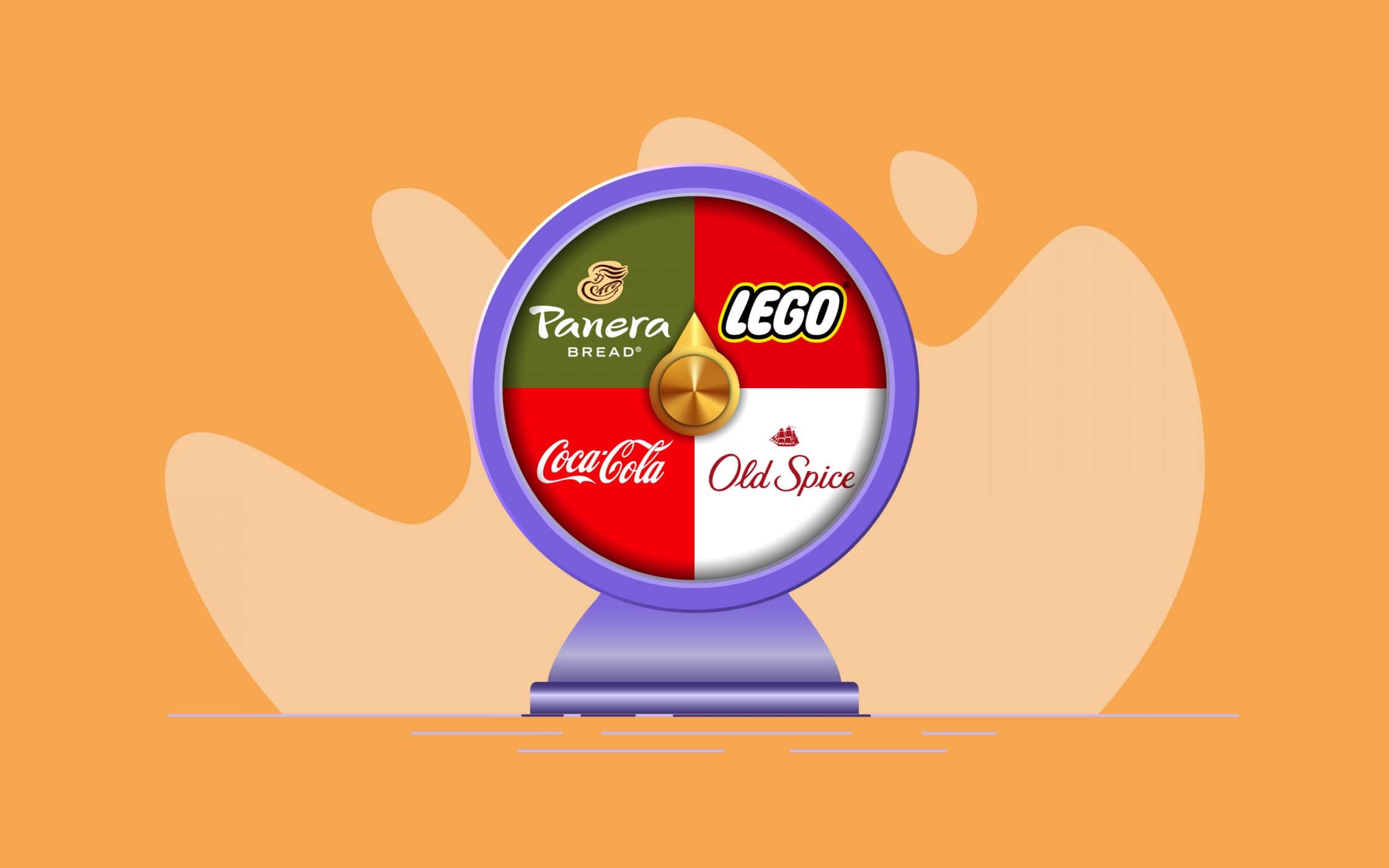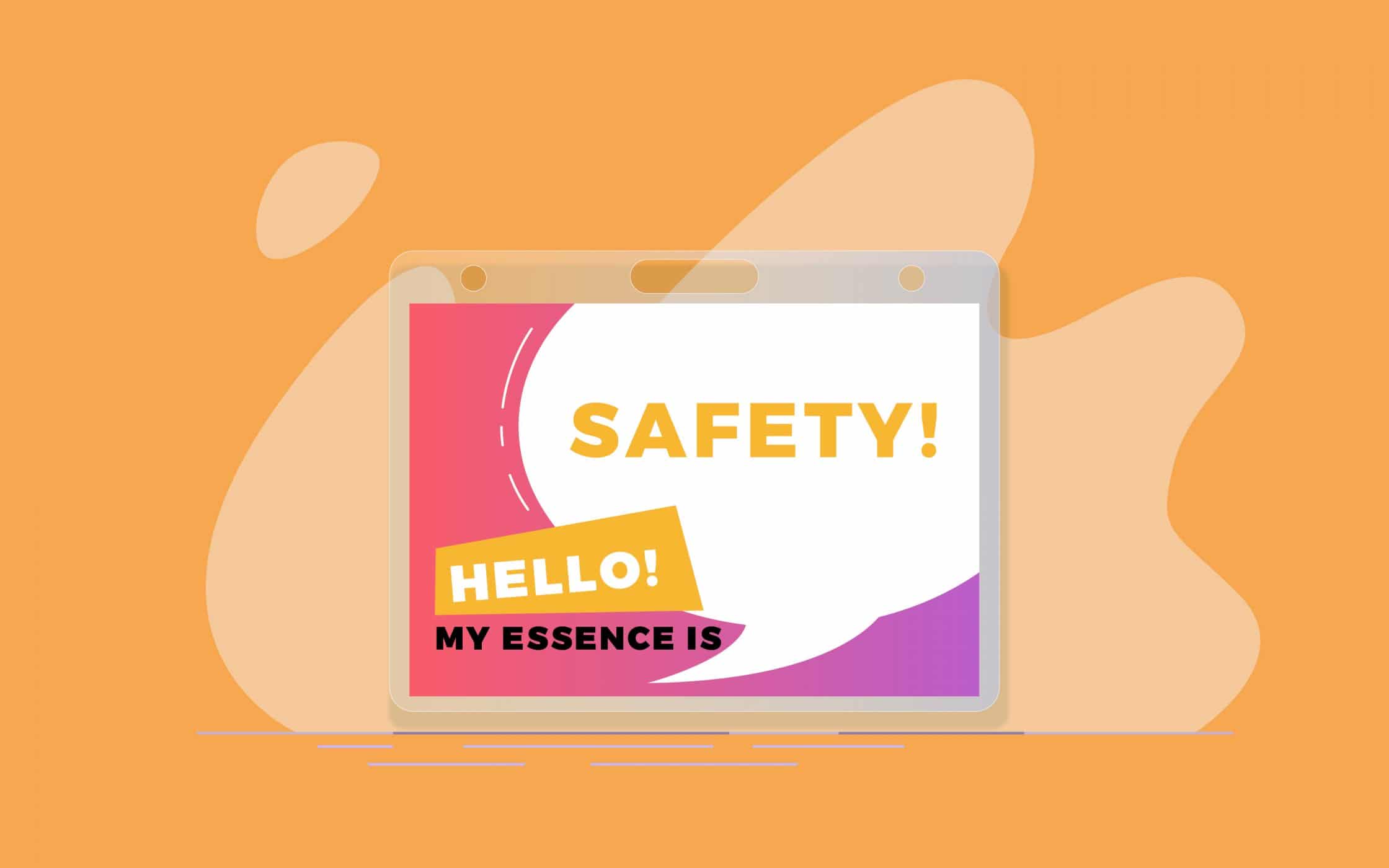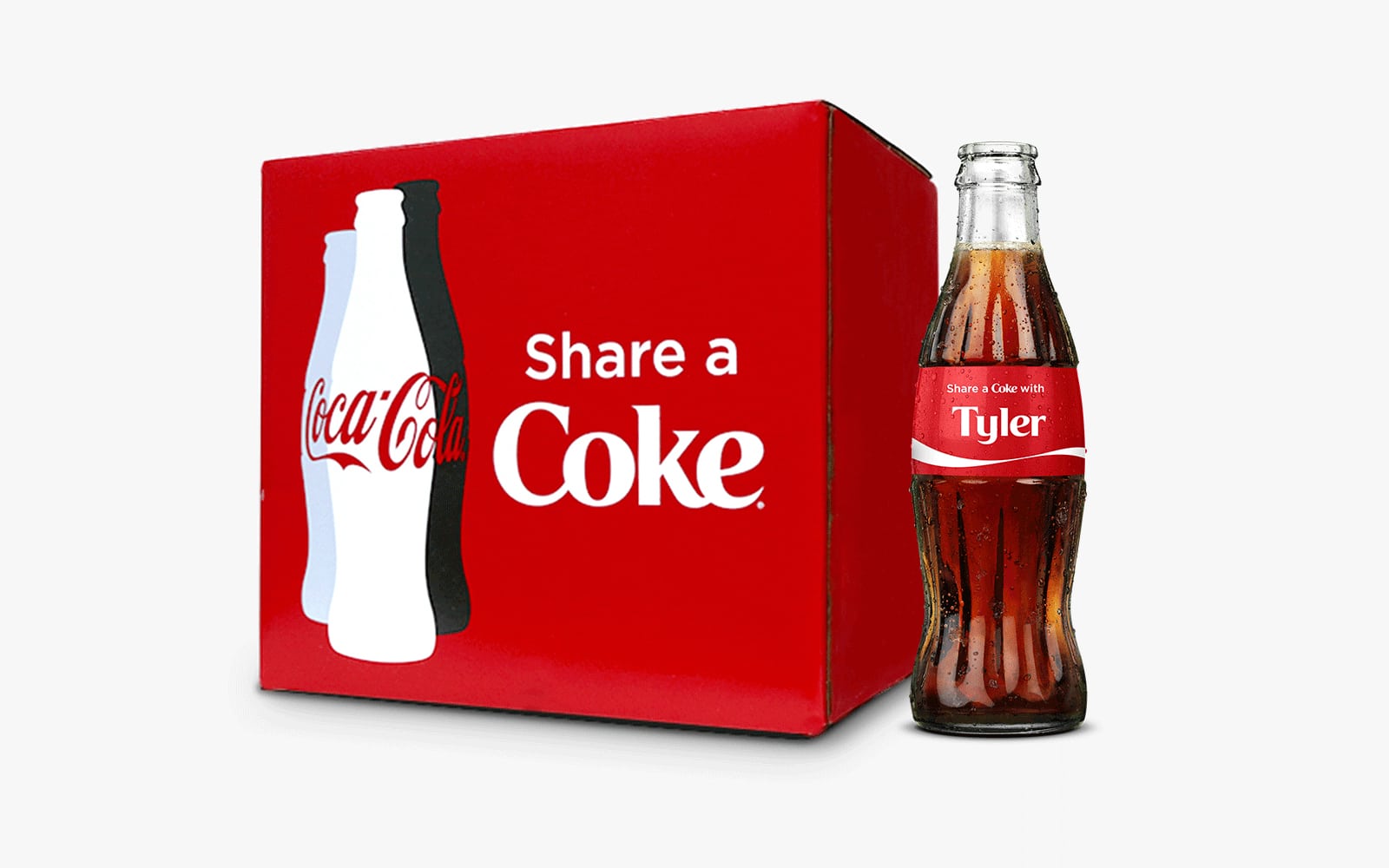Have a heart: Selecting a brand essence statement with spirit

A brand is so much more than a product or a catchy name.
While anyone can build a website and begin selling products online today, companies that establish real emotional connections with their customers benefit from greater loyalty and better profit margins.
Think about your favorite sports team, for instance. You might have continued to support them throughout your life, even if they haven’t won anything in the last 10 years. It’s the emotional attachments we make that ensure we stay true to specific groups and companies – not just what they sell.
So, how do you make sure that you’re connecting with your audience?
Simple, start with a brand essence statement.
Customers buy the unseen and intangible characteristics of your company – the things that make you genuinely unique compared to other businesses offering similar services. Your company’s personal brand essence highlights your values as an organization, the value you can provide to others, and the experiences you give your customers.
Essentially, your essence is the “ground zero” point of your brand development.
By the time you’re finished reading, you’ll know how to establish your brand essence wheel, and build a foundation for the growth of a potent professional identity.

The benefits of brand essence planning
Your brand essence statement is a crucial document in your business plan, similar to a brand manifesto, mission or vision statement. With effective brand essence planning, you can determine how you’re going to create connections between your customers and your brand, using emotional and intangible elements within your company’s identity.
Most of the time, a brand essence statement will include:
- An insight into what makes you different from your competitors.
- A highly focused message or description of values.
- An overview of the emotional experiences customers have with your brand.
- A plan for consistent delivery.
In a handful of words (usually between 1 and 3), your personal brand essence will tell customers, employees, and shareholders what drives your business forward, leading to better brand recognition and awareness.
Of course, creating a brand essence statement isn’t always easy. This information is based on emotive and intangible factors. Distilling the soul of a company into a couple of words is tough – that’s why so many organisations turn to brand and marketing experts like Fabrik for help.
To succeed, your brand essence needs to be authentic, succinct, and meaningful. Just look at some of the world’s most widely recognized examples:
- Hallmark: Caring Shared.
- Nike: Inspiration and Imagination.
- Apple: Think Different.
- Walt Disney World: Magical.
The language you use in your brand essence statement will reflect the company you’re building and the products you sell. For instance, Harley Davidson might use the word “liberation” in its brand essence document, while Dove may focus more on “cleanliness” or “freshness.” Once you find your essence, you can use it to deliver a more consistent experience to existing customers and target your marketing efforts towards a more lucrative audience.

Around we go: Creating a brand essence wheel
All great brand building processes begin with a little introspection.
If you don’t know who you are and what you stand for, how can you expect your audience to understand your business?
Companies use many different strategies to determine their “brand essence,” including things like laddering, and the development of a brand essence wheel. Both laddering and the brand essence wheel involve looking at different components of your company to help you better understand what it stands for. For instance, you’ll need to examine:
1. Physical characteristics and brand attributes
Physical characteristics or brand attributes are on the outer rim of the brand essence wheel. They look at the “objective” facts about your company that customers or shareholders could check on if they need to. For instance, if you’re an outdoor tour company, you might offer your customers a lot of winding walkways and trees. It’s easy for someone to make sure that you’re telling the truth about something like that.
Ask yourself whether any attributes should make their way into your brand essence, or whether they’re better suited within your brand promise. For example, Panera’s essence is all about being “natural,” and they promise their customers that they’ll use no artificial preservatives or flavors as a result.
2. Rational and emotional brand benefits
The next stage in the brand essence wheel, and an essential part of engaging your customers, is identifying what your company can do for other people. List some of the most relevant and unique rewards or benefits that could create loyalty for your brand. For instance, if you’re selling a cooking product, you might be able to provide your customers with healthier and more delicious meals. Just look at Dyson and their ability to give customers vacuums that never lose suction.
Keep in mind that the benefits you look at don’t have to be strictly logical in nature. You can also consider how your brand makes people feel. Lego has built its brand essence around the experiences of joy and creativity that it provides to both adults and children alike.
3. Values and personality
While your brand benefits examine the things that you can provide to your customers right now, your brand values look at the kind of company you want to be. For instance, if you want people to define your brand essence with words like “reliable,” then you’ll need to make sure that reliability is an evident component of everything your brand does.
Your personality will also have an impact on how people perceive the heart and soul of your brand. The way you speak in your marketing, the kind of messages you share and the things that you do each day will determine how people see you. Think about how Old Spice has changed its essence to become a more quirky and playful brand.
4. Brand image and identity
Although much of your brand essence statement will focus on how your business feels, rather than how it looks, remember that image can play a big part in the success of your campaigns. For instance, if you want your brand essence to be “Modern and playful,” then it makes sense to avoid serif fonts that are highly traditional.
The smallest details, from the shapes that you use in your logos, to the typography you choose can affect the credibility of your brand essence. Just think about the unique shapes of the bottles associated with the Coca-Cola brand essence, or the robin’s egg blue of Tiffany boxes.
With the help of your brand essence wheel, you can work from the outside in to define who you are, and what you need to convey to others.

Getting started with your brand essence statement
Now that you have all the information from your brand essence wheel to guide you, it’s time to start working on your statement.
As mentioned above, your brand essence statement identifies the core “why” of your business. The more you know about your company before you start searching for this idea, the easier it will be to find the right words to summarize your company. For most people, brand essence planning will begin with asking yourself or your team a few basic questions, including:
1. What do we do?
As the head of your organization, you should have a basic idea of what you do. However, it’s important to think about your actions or offerings as they relate to the customers that you serve. In other words, why does what you do make you special? To get more information, explore:
- Conversations with key stakeholders.
- Competitor analyses.
- Governance statements (i.e., vision and mission statements).
- Client and customer surveys.
- Team brainstorming sessions.
2. How do we do it?
Once you know what you do, the next step is to understand how you do it. This means looking at the values that guide your decision-making processes, your processes and more. Your behavior as a company is part of what makes your business so unique. Look at things like:
- Your brand equity – where are you delivering value to your industry?
- SWOT analyses – what are your strengths, weaknesses, opportunities, and threats?
- Points of differentiation and your USP.
- Brand personality traits.
- Brand values.
3. Why should people choose you?
Finally, your brand essence statement should remind you and your employees of the reasons why people get behind your company in the first place. If you know what sparks affinity among your target audience, you’ll be able to boost the efficiency of your marketing communications and encourage better results from your customers. Examine things like:
- Your brand positioning and niche.
- Your brand statement or promise.
- The identity you represent.
- The experiences that you offer.
- Your tone of voice / personality.
The more questions you answer about the nature and heart of your brand, the more you’ll be able to convince people that your business is worth their time and commitment.

Tips for finding your personal brand essence
As mentioned above, your brand essence statement isn’t just another piece of paper in a chunky manifesto. With brand essence planning, you’ll have a guiding compass to help you make the best (most profitable) decisions for the future of your company.
For instance, Volvo doesn’t focus on appealing to customers in search of fast or luxury-style cars. Instead, because their essence revolves around “Safety,” Volvo concentrates on marketing and branding efforts that make their audience feel secure.
When you’re looking for your personal brand essence, start with the following steps:
1. Start with what you know
When you begin your brand essence planning process, list out all of your big-picture organizational goals so you can see what you’re trying to accomplish, then conduct a brand audit to see where you are right now. Knowing your starting point and the path that lays ahead will help you figure out how you’re going to get from point A to point B.
Remember, while you can start by listing as many adjectives as you like to describe your brand essence, your aim should be to end up with just 2 or 3 words that highlight the soul of your business. Focus is key.
2. Find your brand promise
Your brand promise and brand essence statement should work together correctly. Remember, every company “promises” something, whether its aware of it or not. Your pledge will determine your current position in the marketplace, your USPs, and what your customers expect from you.
With your brand promise in mind, you’ll be able to develop a personal brand essence that encapsulates the experiences you give to shareholders, customers, and staff every day. Using your essence as a compass will ensure that you follow through on your promise.
3. Listen to the marketplace
Most of the time, creating a brand essence wheel starts with internal evaluation and insights. With the help of your team and your initial business planning documents, you’ll be able to see why you launched your company in the first place. However, you should also be listening to the perceptions that other people have of your business.
Eavesdropping on word-of-mouth and customer comments may give you a view of your brand that you never considered before. At the same time, listening also means that you can determine whether the image and brand essence that you want to create aligns with the identity you’re demonstrating to the world.
4. Keep it simple
The best examples of brand essence statements are often shared for their simplicity and conciseness. For instance, Apple’s essence is simplicity and innovation, demonstrated by the tagline “Think Different.”
Since your brand essence will serve as the North Star for your marketing materials, brand building strategies, and even your recruitment campaigns, it’s important to keep things as short as simple as possible. As tempting as it can be to attribute paragraphs of positive adjectives to your business identity, essence is all about refining the soul of your company down into its most important and influential factors.
5. Ensure consistency
Finally, once you’ve decided what your brand essence statement is going to be, make sure that you stick with it. Even the best brand mantra is no good if it’s not something that you and your team members can live by.
Make sure that everyone in your organization knows what your brand essence statement is, and how they can use it in their everyday activities. For instance, companies like Apple put their brand essence statements on the walls of their company so that their staff can be inspired whenever they walk through the office. Think of your personal brand essence as a yardstick by which you can measure the relevancy of every marketing and branding initiative.

3 Incredible Examples of Brand Essence Statements
Here at Fabrik, we’re experts at all-things branding. That means that we have no trouble guiding people through things like brand essence planning or navigating the brand essence wheel. However, for people who are new to complex and emotional concepts like “essence,” it can help to seek inspiration from other companies that have already established themselves as major challengers.
We’ve put together 3 of our favorite examples of brand essence statements, to help you understand what it takes to discover the heart and soul of your company.
1. Apple: Think different
The Apple brand essence is something that professionals refer to a lot when discussing successful branding stories. After all, few companies are better known, or better loved than Apple. Though the company was founded by college dropouts, it quickly emerged as a technology superstar, surprising the masses by becoming the first $700 billion company in the USA.
Apple focuses on imagination and simplicity in their brand essence statement. While they want their customers to have access to the latest technology like facial recognition, AI and even augmented reality, they also want to ensure that those features are as easy-to-use as possible too. It’s this combination of creativity and accessibility that makes Apple so appealing.

Apple also positions itself as something “different,” and exclusive. They maintain a lot of secrecy around the inner workings of the brand, and always make a big deal out of new product launches. This way, the company has turned something as simple as the arrival of a new phone into a substantial worldwide event.
2. Coca-Cola: Sharing and happiness
Most companies that sell beverages seem to center their brand essence statement around things like refreshment and satisfaction. However, Coca-Cola took a unique approach with their brand mantra, by highlighting the experience of “Joy,” and the concept of sharing.
If you browse through Coca-Cola’s advertising efforts over the years, you’ll see a distinct focus on things like community and happiness. The brand wants people to remember the way that the drink makes them feel, rather than the taste of the beverage. The idea that Coca-Cola is something that should be shared, like a hug or a gift, is so prominent that the company even started printing names onto their bottles and cans to convince people to give the drink to the people they knew.

The “Share a Coke” campaign is easily one of the best-known and most effective advertising strategies in history.
3. Dove: Confident and natural
Dove offers one of the best examples of brand essence statements because, like Coca-Cola, it embraces a unique identity. Rather than concentrating on common ideas for a soap brand like cleanliness or performance, Dove is all about being natural and helping people to feel comfortable and confident in their skin.

As you look through the marketing campaigns that Dove has published over the years, you’ll notice that they’re all about helping people to see their beauty, whether they’re big, small, young or old. The Dove brand essence statement sets the company apart as a business that truly cares because it’s not asking people to change. Instead, Dove tells us that we’re perfect just the way that we are, and that it can help us to protect that natural beauty.
Great brands embrace their brand essence statements
Think about some of the most iconic brands in the world.
The companies that we know and connect with differentiate themselves in a number of different ways, from the products that they sell to the images that they share. However, it’s the “why” behind the companies that dictates how we feel about them on an emotional level.
Apple shows us that it’s an innovator by creating simple yet engaging products using the latest technology. By giving customers the experience that they want most, Apple turns its followers into passionate brand advocates, most of which are happy to act as ambassadors for the company for life. Apple’s brand essence even permeates the internal workings of the company too, so that the employees in the company are just as passionate about their “why” as the customers are.
Ultimately, a good brand essence statement is compelling because it appeals to the emotional portion of the consumer’s brain that compels us to make intuitive decisions. With strong brand essence planning, you can connect to your customer’s “gut feelings” about your company and establish loyalty for your brand. After all, how often do you hear about someone buying a car that they “fell in love with,” or a phone that they just “couldn’t resist”?
Ultimately, every purchasing decision that a person makes comes from a desired outcome – to have the latest tech, to look cool, or to feel comfortable. The brand essence statement that you establish for your company is how you appeal to those desires in your followers.
Once you find your essence, nurture it – it will be the thing that guides you towards success for years to come.
If you enjoyed this article, you might enjoy these too:
— Brand essence: Finding the soul in your brand
— Body language in business: Decoding the signals











